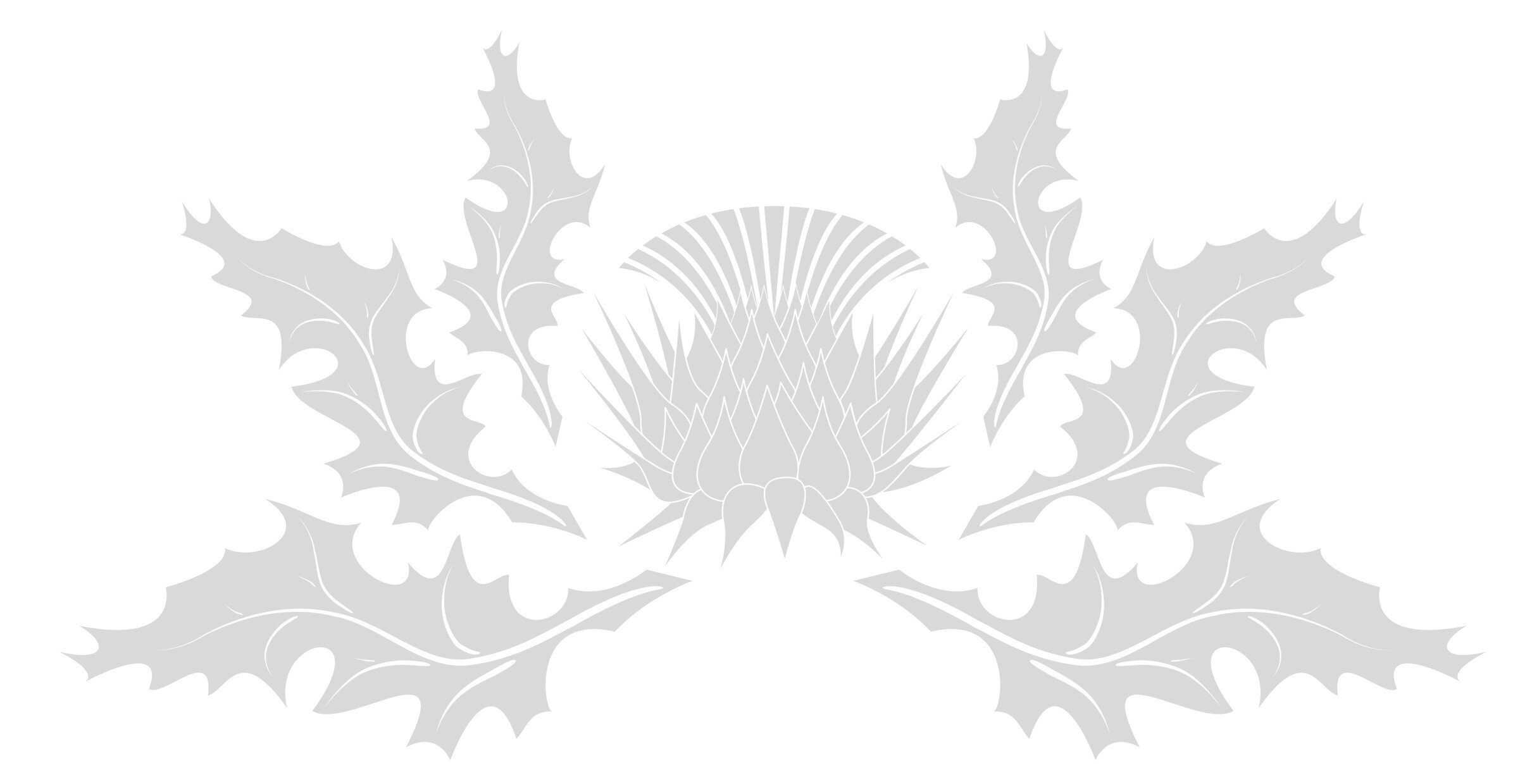
Frequently Asked Questions
What IS Scottish country dancing?
Scottish country dancing, often abbreviated to SCD, is a form of social dance that involves couples in groups called sets. The couples typically stand facing each other in lines and trace progressive patterns that differ from dance to dance. The figures are repeated by each couple in turn. There are fast dances (hornpipes, jigs, and reels), and slow dances (strathspeys).
Want to see Scottish country dancers in action? Click here for a video.
Is SCD the same as highland dancing?
No, SCD can include features of highland dancing, but it differs from true Scottish highland dancing in that it is social dancing, not a performance art or a sport.
What is the Royal Scottish Country Dance Society?
The Royal Scottish Country Dance Society, or RSCDS, is a worldwide organization with some 20,000 members. It is administered from the Headquarters in Edinburgh through a network of 170 branches and around 400 affiliated groups all over the world. The Society works to preserve old and new Scottish country dances and trains teachers in a rigorous program for certification. In 1923, Jean Milligan and Ysobel Stewart co-founded the Scottish Country Dance Society, resolving to restore the practice of the old social dances of Scotland and with them their music. The title “Royal" was conferred upon the Society in 1951 by King George VI.
Where can I learn to dance?
Most of the branches and affiliated groups of the RSCDS offer regular classes for dancers at all levels, including beginners. Check our Classes page for information on the New York Branch classes (held in Manhattan on Thursdays) or our Links page for information about other local dance opportunities. SCD is very sociable—it is standard practice to dance with different partners. Thanks to the RSCDS, Scottish country dancing is sufficiently standardized that a traveling dancer can pack dance shoes and be welcomed almost anywhere in the world.
Do I have to come with a partner?
No, that’s not necessary. Singles are welcome. And even if you do come with a partner you'll dance with many others. Dances are social occasions, and by changing partners you'll meet lots of new people. It’s just as likely that a woman will ask a man—or another woman—to dance as that the man will invite a woman to be his partner.
Do I have to wear special clothes?
For classes, everyday clothes are fine. Women often wear skirts that are comfortable and full. The men wear casual pants or kilts.
For parties, dressier clothes are in order, and for balls you'll want to get really dressed up. Men typically wear either tuxedos or formal Highland dress, including a kilt and a jacket called a "Prince Charlie. It’s possible to rent men’s formal wear.
The most important article of clothing is shoes, for both comfort and style. The traditional shoes for Scottish dancing are ghillies, soft-soled leather shoes that are tightly laced for support. Ballet slippers are also popular with women. For beginners, however, any soft-soled shoes without heels will do, to protect the dance floor.
What are your masking and COVID-19 vaccination rules?
Masks are optional, and vaccination is recommended.
Do you have to be Scottish to do Scottish country dancing?
No, in fact at the New York Branch we have had regular dancers from Australia, Japan, Russia, and Germany as well as Scotland, England, and the U.S., and we often welcome travelers who stop by for an evening of dancing while they’re in New York.
Is there an age limit?
Again the answer is no. Dancers at the Branch have ranged in age from their teens to their nineties—and everything in between. Dancers of all ages can enjoy Scottish country dancing for the grace of the figures, the rousing music, the exercise, and the camaraderie. Come, dance with us!